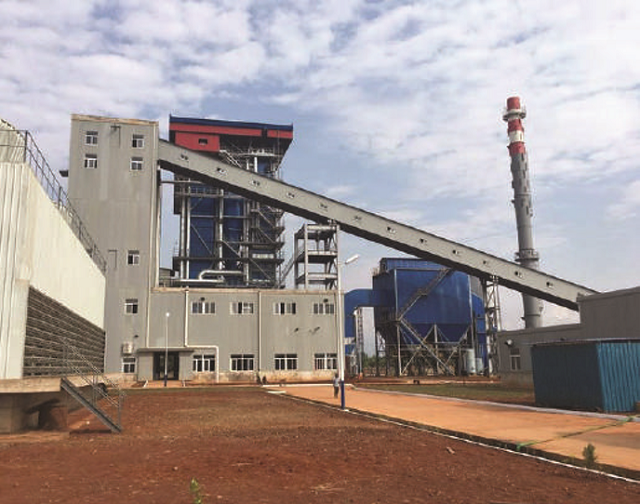
Rwanda recently celebrated the opening of its first peat-fired power plant at Gishoma in the far west of the country, a $39.2M project. It is the first of its kind in Africa.
By Lydia Cole
Another larger peat plant, costing $350M is under development in Gisagara to the east. The plan is for Gishoma to start feeding 15MW of electricity into the national grid imminently, and Gisagara 80MW by 2019.
The Rwandan government is hoping to achieve its goal of connecting 70% of the country’s 11.7 million people to the national grid by 2018. This is a near three-fold increase on the number connected at present. The peat-to-power plant at Gishoma will contribute to this goal, and further increase the installed capacity of the nation. This will reduce Rwanda’s reliance on expensive imports of diesel oil for power generation.
At the moment, only 25% of households have access to the 190MW of power generated in country. But over the next two years the capacity is projected to reach 563MW in line with national development goals. This increase will be made possible in part through the harnessing of power from peat.
Peat power
Peat provides an effective energy source when dried, comprising a minimum of 30% organic matter. It develops under anaerobic conditions, where waterlogging significantly slows or prevents the decomposition of dead vegetation. As the vegetation grows in the surface layers, it absorbs atmospheric carbon through the process of photosynthesis. When it dies, this carbon is stored in the accumulating substrate which is peat.
Peatlands are found across the world. But they are concentrated within certain regions where high humidity or low temperatures reduce the rate of decomposition. These include the coastal lowlands of southeast Asia or northern Russia’s permafrost zones. Despite covering just 3% of the world’s ice-free land surface, peatlands store up to 30% of its total soil carbon stock. This makes them the most efficient carbon storage facility we have.
But arguably, not a renewable one. Though each peatland varies, one centimetre depth of peat may take an average of 10 years to accumulate, and less than 10 minutes to burn.
Rwanda energy mix
Rwanda’s energy comes from a diverse mix of renewable sources. Hydro-power is the main contributor at 59%, followed by thermal (40%) and methane (1%). There are also ambitious plans for off-grid power from solar.
Peat power is considered one of these more sustainable indigenous sources of energy. It has the potential to contribute nearly 20% to the national energy supply in five years’ time.
It’s estimated that there will be sufficient peat deposits to power Rwanda for 30 years, or some proportion of the country at least. The enhanced power that will come from the Gishoma and Gisagara peat-to-power plants is seen as an important part of the country’s development provision.
The plans are enabled through financial support from the African Finance Corporation, the Development Bank of Rwanda and Finnfund, the Finnish Development Finance Company, among other lenders. Finland has expertise in peat extraction and its use in the energy industry, with an average of 5% of its national supply coming from peat. This was encouraged by subsidies until recently.
But where is Rwanda’s peat?
The Gishoma plant is nestled within the Nyungwe Forest National Park. This is an untouched natural rainforest that is filled with exciting biodiversity.
The park’s website boasts of the presence of hundreds of species of trees and orchids within the park, such as the swamp-dwelling Eulophia horsfellii. It’s also host to numerous plants species of medicinal value, like the East African satinwood, Zanthoxylum gilletii, and to one of the last stable populations of chimpanzees in East Africa. But there is no mention of peat. It’s evidently not a key feature for the average tourist.
There are vast areas of peatlands across the Tropics that we are only now starting to map and understand their full extent and carbon content. For example, it was only a few months ago that the first map of the world’s largest tropical peat complex was published. Around 145,500 square kms of peat swamp forest was found in the central Congo Basin.
There may well be vast resources of peat in Rwanda that local residents have known about for years, or that the Finns have sniffed out recently, of which science has yet to be told or be concerned about. But whatever the scenario defining the nation’s peaty asset and wherever it is exactly, it is unlikely to be there for much longer if peat-to-power generation continues to be Rwanda’s cost competitive energy solution.
Given that it takes thousands of years to accumulate just hundreds of centimetres of peat, is peat-power really the solution to the nation’s energy needs? Can the Elon Musk’s out there create an energy-storage solution quickly enough that renewables make a serious contribution?
For now though, Rwanda is set to power through its peat.
****
Lydia Cole is Researcher Associate of the Department of Zoology; Environmental Scientist, Rezatec Ltd., University of Oxford
****
Source: theconversation
 The Independent Uganda: You get the Truth we Pay the Price
The Independent Uganda: You get the Truth we Pay the Price




